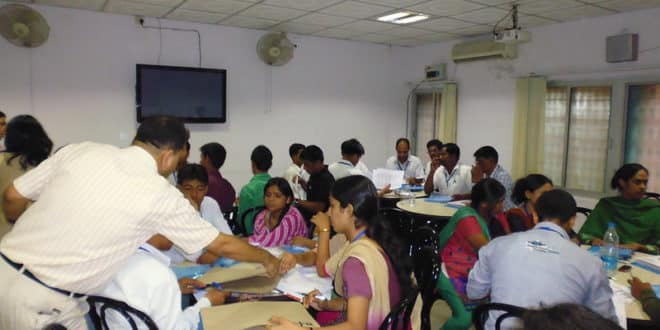Step 1: Design
The first key step is to ‘Design the harvest’. What this means is that the team is effectively developing the key research questions. In outcomes harvesting, this process takes careful account of the users in the conversation and their expectations and perspectives, as well as their needs. What is it that the team aims to gain from the evaluation process? These may be questions around what effects can be noted and what this might mean for to overall strategy. The decision of what data to gather should be informed by these questions, but at the same time, many of these questions will be formed by knowing what data the programme is there, and how unfolded around its formulation and collection.
Step 2: Gather data
This step is about gathering the data and describing what took place. Throughout the design phase, and as you begin to gather data, you want to ensure you have two key dimensions of information. Firstly, you want to know the outcome. What changed? Who was there? And secondly, you want to understand the contribution. Considering the outcome, what contributed to it coming about? Describe the interplay between the change agent, and the outcome as you define the outcome.
Step 3: Engage
This step is important as this is where you will work with the change agents, and all the stakeholders on the project to test the assumptions made as you harvested the outcomes and described their occurrence. Indeed, data gathering becomes iterative, as you use surveys and interview to gain this information from key people. Use this step to be sure that your statement of outcomes is specific and plausible and that the connections make sense. Your engagements should confirm this.
Step 4: Substantiate the outcomes
This involves a process whereby the primary users of the evaluation will interview independent people, with knowledge of the space, or outcomes based on a selected sample. This serves as a process of independent verification.
Step 5: Analytics and Interpretation
In this step, the data on outcomes is consolidated and analysed. You may look for key themes as you categorise the information. Depending on the type of programme, this may be participatory or where the data is highly complex and of significant volume, you may instead prefer to use qualitative analytic software. You can really use any analytic method which fits your data and the values underpinning your programme.
Step 6: Support the use of Findings
In this step, you will present your findings to the users of the evaluation, and potentially make recommendations about what these findings mean. It is important to remember however, that Outcomes Harvesting is merely a perspective, a story of events which took place with a retrospective analysis of cause. The information generated is best for feeding into a broader strategic process.




